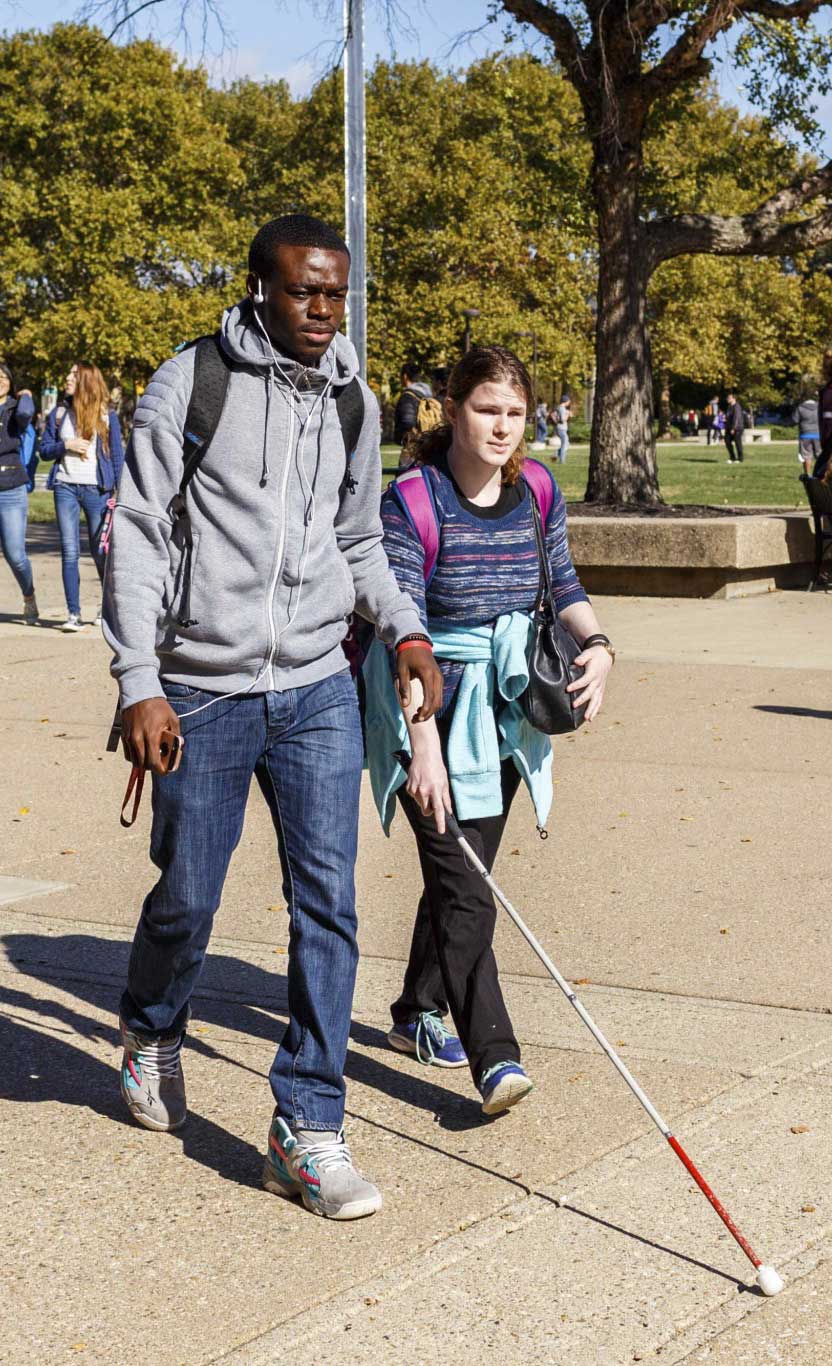Blind and Visually Impaired (BVI)

Blind and visually impaired students present unique challenges and opportunities for instructors. This document serves as a starting point for understanding how to address those challenges and opportunities. First, it’s helpful to understand the nature of the student’s vision loss. Often, students who are visually impaired are apart of a visual spectrum. Students that are “blind” have no vision at all.
- Partially sighted students: A student who has some vision in one or both eyes.
- Low vision students: Describes a student with limited vision that cannot be corrected by wearing glasses or contact lenses. In some cases, the student can see up close, but not far away. Other students may have poor visual acuity across the spectrum.
- Legally blind: A student who is legally blind has vision that cannot be corrected to better than 20/200 in at least one eye.
- Totally blind: A student who has no vision at all.
Working with Blind and Visually Impaired in the Classroom
- Always use the student’s first name when addressing them. This allows the student to recognize that you are speaking directly to them and not someone else.
- It’s okay to use words that reference sight. You don’t have to avoid words such as “see” or “look”. These words are apart of normal conversation.
- Don’t gesture, always verbalize. When writing on the board, you will need to verbalize what you are writing so the student has access to the information and can follow along with what is being said. One should use positional and directional concepts like “above/under, on top, in front of, to the left or right. One can use descriptive sentences to show placement such as saying, “The ball is next door” vs saying “The ball is over there.” Avoid words and phrases like “here” or “there.”
- Always favor the student’s stronger side of their vision when determining seating. Seating facing a light source (sun/widows) should be at the students back.
- Use contrast for everything when working with a blind/visually impaired student. Text should be bold, big, and simple.
- Inform student if an object is moved within the classroom environment.
- If students are working in small groups, have everyone introduce themselves.
- Having access to slides prior to class is helpful for the student to prepare for class, as they cannot view the slides in real time.
- Use “Alt text” when displaying an image. This will allow the student’s screen reader to read the description of the picture.
- Professors can check if their material is accessible by running the “accessibility checker” in Word, PowerPoint, Outlook, and Adobe.
Additional Resources
National Federation for the Blind
American Council for the Blind

